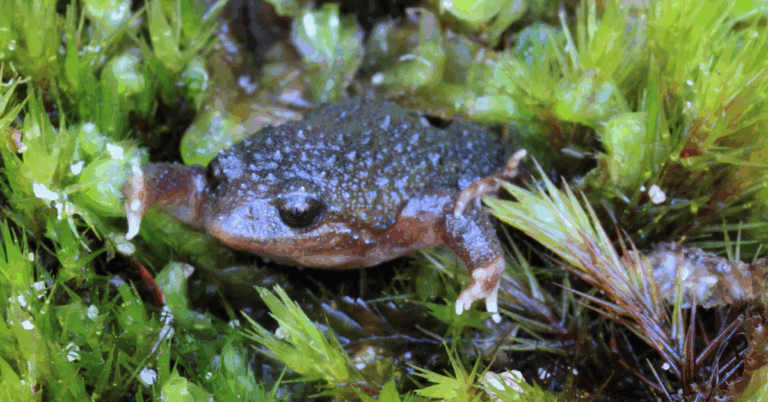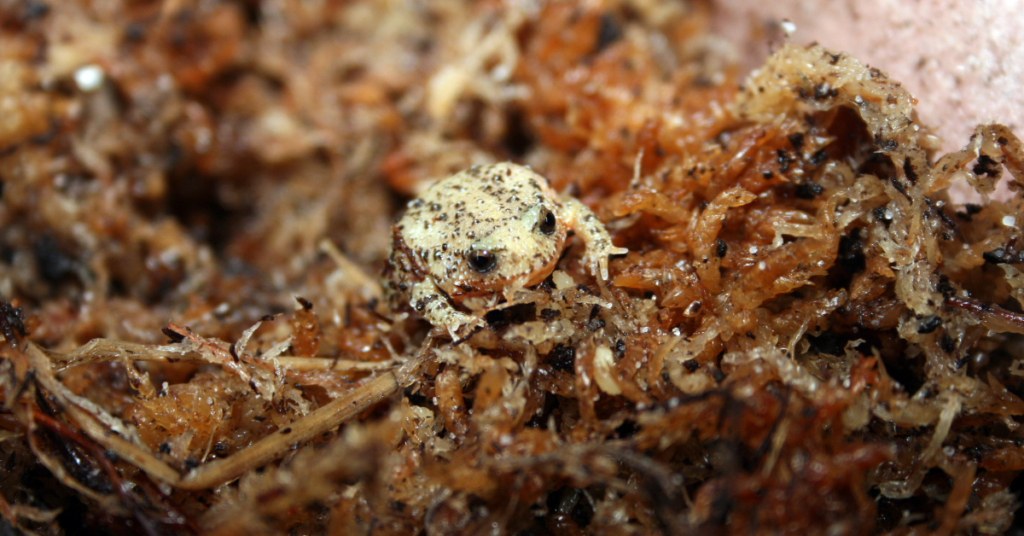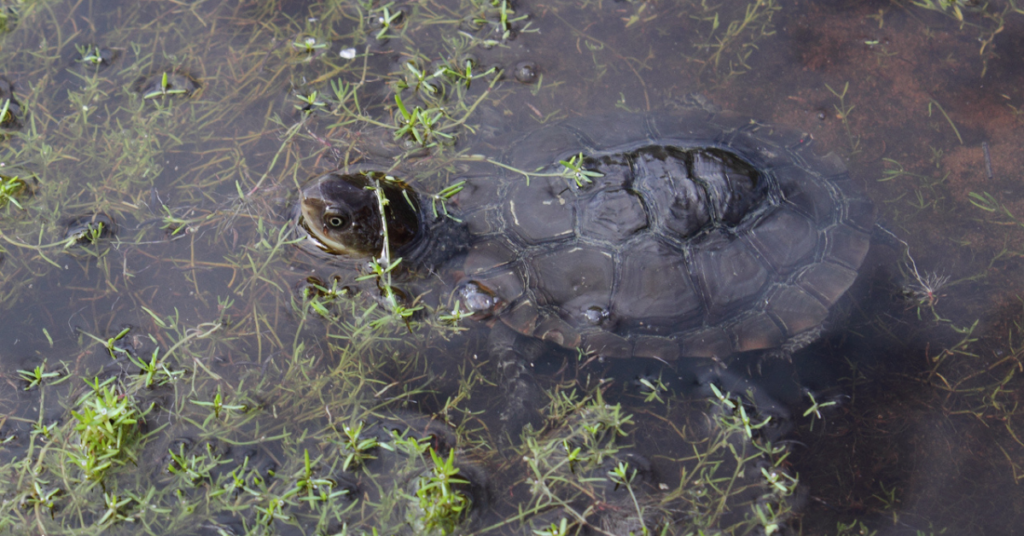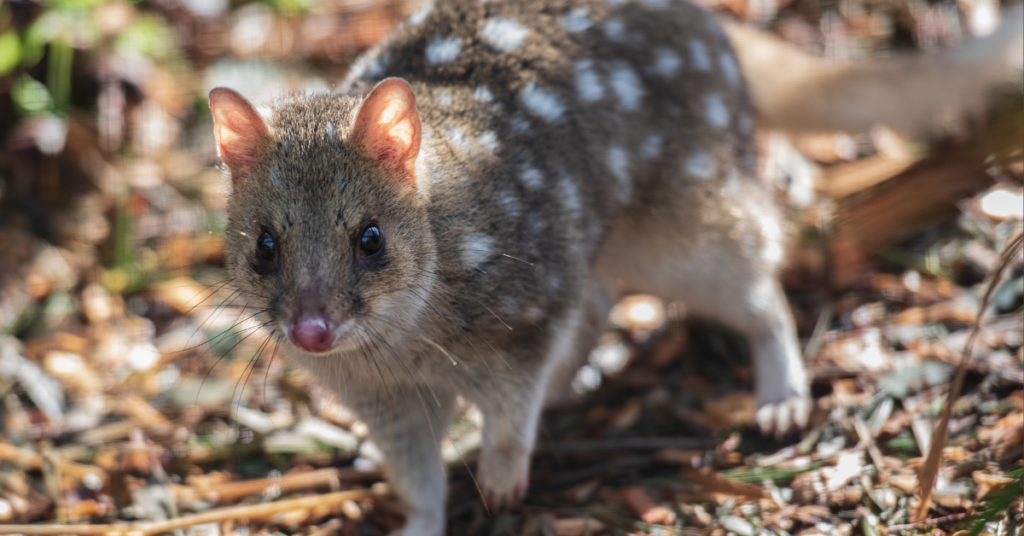
White-bellied frog. Photo credit: Kim Williams (DBCA)
Article by Dr Manda Page
In Short:
- Climate change is increasingly recognised as a key threat to survival of native flora and fauna in the South West of Western Australia.
- Many of the region’s iconic species are struggling to adapt prompting conservation actions to save them from extinction.
- Community members can help by volunteering, sharing information or donating.
A relatively new threat to the survival of our most endangered plants and animals has gained increasing prominence across my 30-year career in environmental science and conservation.
The climate change phenomenon is now widely documented and accepted. And in my line of work, ‘climate-induced change’ is a phrase I find myself using more and more when talking about impacts on native flora and fauna – and most especially (my area of passion) our threatened species. 
For me, ‘climate-induced change’ better encompasses how the change in climatic variables (heat, rainfall) will impact habitat and resource availability.
Never was the impact of climate change on the environment here in our South West of Western Australia more visible than the mass die-off of forests and shrubs in early 2024 following a record-breaking period of dry weather. So widespread, experts likened it to bleaching of coral reefs.
But dig a little deeper than the headlines, and you’ll find the degree of impact on our natural environment due to climate-induced change is eye-opening indeed. But first, let’s talk about the significance of this region in which I am privileged to work.
A Biodiversity Hotspot Under Threat
Our South West is a region of incredible natural beauty and biodiversity. In fact, the combination of high biodiversity (with species found nowhere else like the numbat, western ringtail possum, white-bellied frog and mainland quokka) and high level of threats to species here, resulted in the region’s international identification as Australia’s first global biodiversity hotspot. There are now just two.
For millions of years South West species have evolved in isolation, creating this rich tapestry of life. But rising temperatures, declining rainfall and more frequent extreme weather events are creating an increasing level of peril.
In 2021, a group of university professors and experts published an article on climate change stating: “Nowhere is the damage more stark than in Australia’s southwest”.
Change is occurring
In 2024, climate-related threats like increased temperatures, drought, extreme weather events, increased fire frequency and severity, and rising sea levels were listed as the primary driver of decline for 64% of newly-listed (25) and uplisted (10) species in the annual Australia’s Environment Report.
The truth is, there has always been natural variation in climate, and many Australian species are well adapted to it. For instance, there are arid zone species that can time reproduction to coincide with food availability, are nocturnal, or live in burrows. Nature is so clever!
But shifting the dial on some climatic variables even further is only going to make life increasingly more difficult for many Australian species – and disproportionately.
You see, there are some species which are just less able to help themselves or adapt as conditions change. It could be they:
Have very specific food or habitat requirements;
Are not very mobile so they can’t easily seek out more resources or forage over a larger area;
Depend on seasonal cues for reproduction or even sex determination;
Are highly sensitive to environmental change;
Are already under stress from other factors like disease, habitat modification, predation.
What we’re doing to support adaptation by threatened species
Backed by science, here at South West NRM we’re employing a range of evidence-based strategies to assist our threatened species with adaptation to climate-induced change.
- Artificially create habitat, food or cues.
With funding via the Australian Government’s Saving Native Species program, we’re working in partnership with the Department of Biodiversity Conservation and Attractions (DBCA) to assess the effectiveness of artificially rehydrating creek beds which have at times become too dry for the critically-endangered white-bellied frog. You can read more about this cutting-edge project here. - Establish populations in new areas called assisted migration – For example, moving species outside of their natural range but where habitat is still available.
Also in partnership with (DBCA) and with funding support via the Australian Government’s Natural Heritage Trust, work is underway to assess the potential for establishing new populations of western swamp tortoises in cooler and more southerly locations. - Create more resilience by removing or controlling other threats like predation.
In partnership with Leschenault Catchment Council and again with funding support from the Australian Government’s Saving Native Species program, we’ve been working with landholders on the boundaries of Wellington National Park – home to a range of threatened wildlife like the western ringtail possum, mainland quokka and chuditch. Fauna monitoring has been undertaken via night-vision cameras installed on more than 50 properties along with training for landholders on pest management. The project is designed to reduce the number of feral cats, pigs and foxes entering the park, preying on wildlife and destroying habitat. You can read more about this project here.
What you can do to help
The problem at times, I admit, feels overwhelming. But there are solutions and we can all do our part, even if you don’t work in the environment sector.
A very good place to start is to be informed so with that in mind, I hope you have found this article of help. Please do consider sharing it within your networks.
If you would like to participate more actively, consider attending community planting events happening in your area which help create and restore important habitat. Keep pet cats inside, install a possum drey, plant native species in your garden or invest in a worm farm. There really is something everyone can do!
As an Australian Registered Charity we are also very open to receiving donations towards our work and you can do so as a once-off or on a more regular monthly basis here on our website.
Protecting our threatened species in the face of climate-induced change demands a multi-faceted, longterm approach across all sectors in partnership with Traditional Custodians and community. I remain positive we can make a difference and committed to providing leadership in the natural resource management sector to help make it happen.



White-bellied frog
Western swamp tortoise
Chuditch
